The life of the oak tree collector: 'You soon see there’s only one sensible course of action: collect the lot'
For tree-loving landowners who want to leave their mark, nothing beats planting your own quercetum. Mark Griffiths celebrates the mighty oak and its determined collectors.
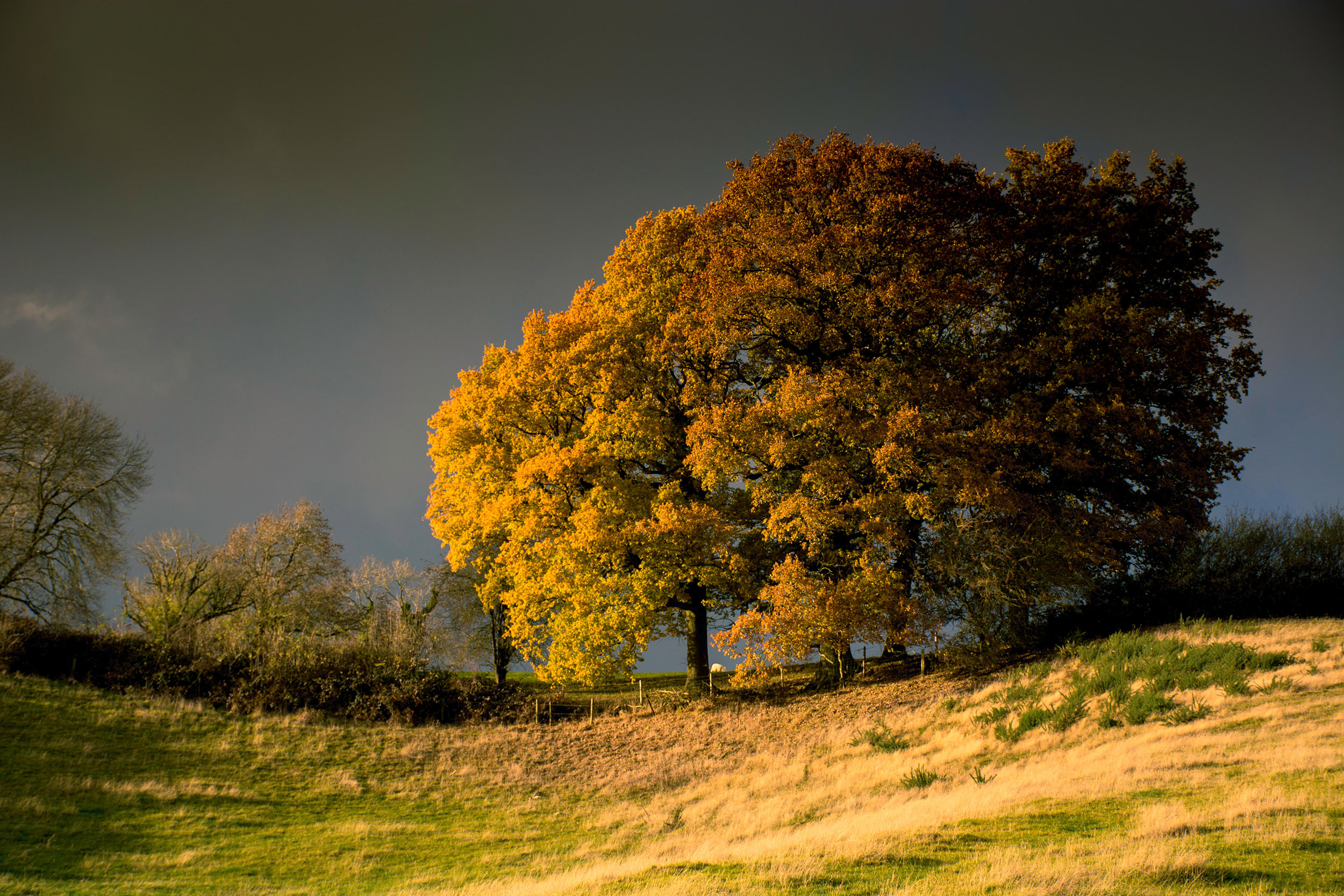
Glanusk is the Welsh seat of that noblest of trees, the oak. In spring and summer, the wilder parts of this glorious Powys estate are garlanded with coppery red and golden green as our native Quercus robur and Q. petraea burst into growth.
Gracing its more frequented areas are specimens that celebrate royal visits, the oldest of which is an exotic Turkey oak (Q. cerris) planted by the Duke of Clarence in the 1880s. This tradition has flourished under Dame Shân Legge-Bourke, who inherited the estate from her father, the 3rd Baron Glanusk. It was crowned in 2012, when The Queen planted a fine example of Q. robur, Britain’s greatest tree and the tree that made Britain great.
Now, a new oak has joined this royal company: Q. rubra Magic Fire. A remarkable cultivar of a North American species, it’s distinguished by its manageable size, red twigs and leaves that resemble the Corinthian order’s acanthus motif in shape and progress in colour from chartreuse in spring to butter and honey in autumn. It was planted on July 4 this year by The Prince of Wales to mark the official opening of the Glanusk Quercetum, one of Britain’s largest collections of Quercus species and cultivars.
The quercetum owes its existence to Dame Shân’s late husband, William (‘Bill’) Legge-Bourke. He liked to collect acorn-inspired artefacts until 1981, when he fell for the product of the real thing, a young oak given to him by Lord Fairhaven. Thereafter, he made time for oak hunting on the trips abroad demanded by his career in finance.
At Glanusk, he sprouted any acorns gathered on these forays and tended the results. He began to dream of creating a living museum of the world’s oaks, a landscape in which visitors would be captivated, as he had been, by the beauty, botany and ecological significance of these most exalted of trees. He took early retirement to pursue this vision.
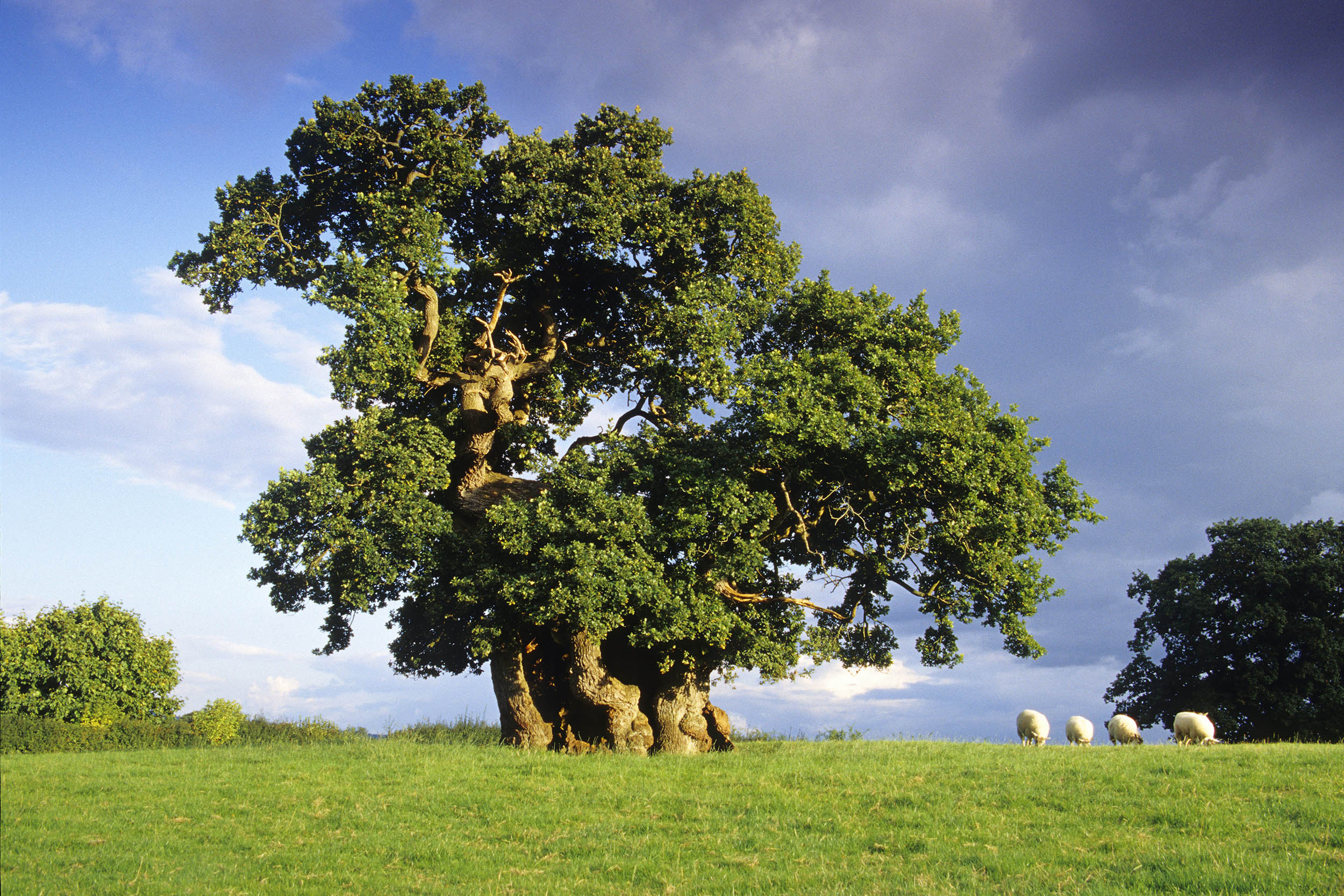
Over the decade that followed, his quest for Quercus took him to China, the Americas, the Near East and the Caucasus. He became an active and much-loved member of the tree aficionados’ corps d’élite, the International Dendrology Society, and of the no-less rigorous International Oak Society. He took part in sponsoring botanical expeditions that yielded oaks, some of which were new not only to cultivation, but also to science.
Between gifts, swaps and the acorns germinated in his specially adapted glasshouse, he was able to plant out no fewer than 190 young trees. His dream of the Glanusk Quercetum was becoming reality. Then, in 2009, he died at the age of 69.
Sign up for the Country Life Newsletter
Exquisite houses, the beauty of Nature, and how to get the most from your life, straight to your inbox.
His son Harry, who now runs the Glanusk estate, recalls that, in the aftermath of his father’s death, the oak glasshouse was neglected: ‘Understandably, given the circumstances, and only for a short while, but it was long enough to do terrible damage. Summer that year was hot and I returned from a period away to find that every one of my father’s seedlings — 100-odd Quercus varieties — had perished from thirst.
‘There and then, I vowed to replace them. I contacted his friends in the Quercus community. They were brilliant, rallying round with seeds and plants. My father’s friends became mine; so did his project. The oak bug bit me as it had done him.’
Its bite is powerful, says Mr Legge-Bourke: ‘It can drive one to peculiar lengths. I was after Q. baloot, a real rarity. Evergreen, shrubby, with holly-like leaves, it occurs in a small area of the Afghanistan-Pakistan border. When my old regiment, the Welsh Guards, was deployed to Afghanistan, I sent a message to the commanding officerin Kabul, asking if acorns could be collected. The answer: “Better things to do. Out.”.’
Among non-British oaks, Mr Legge-Bourke’s favourite is Q. dentata, a deciduous species with leaves similar in shape to our native Q. robur’s, but 1ft in length and lustrously leathery in finish. Unlike the Afghan that avoided capture, it certainly appealed to the military mind. Revering its magnificent foliage, daimyo, the warlords who were feudal Japan’s principal landholders, planted this tree beside houses and temples.
‘Yes,’ Mr Legge-Bourke affirms, ‘with those enormous leaves, Q. dentata has my vote, but most oaks will be winners at the right time and place. There are so many kinds and they differ so widely. In autumn, the foliage of North America’s deciduous species can turn astonishing shades. In spring and early summer, the evergreen species from Mexico, such as Q. rysophylla, produce colourful new growth.
‘Start looking into oaks and you soon see that there’s only one sensible course of action: collect the lot.’
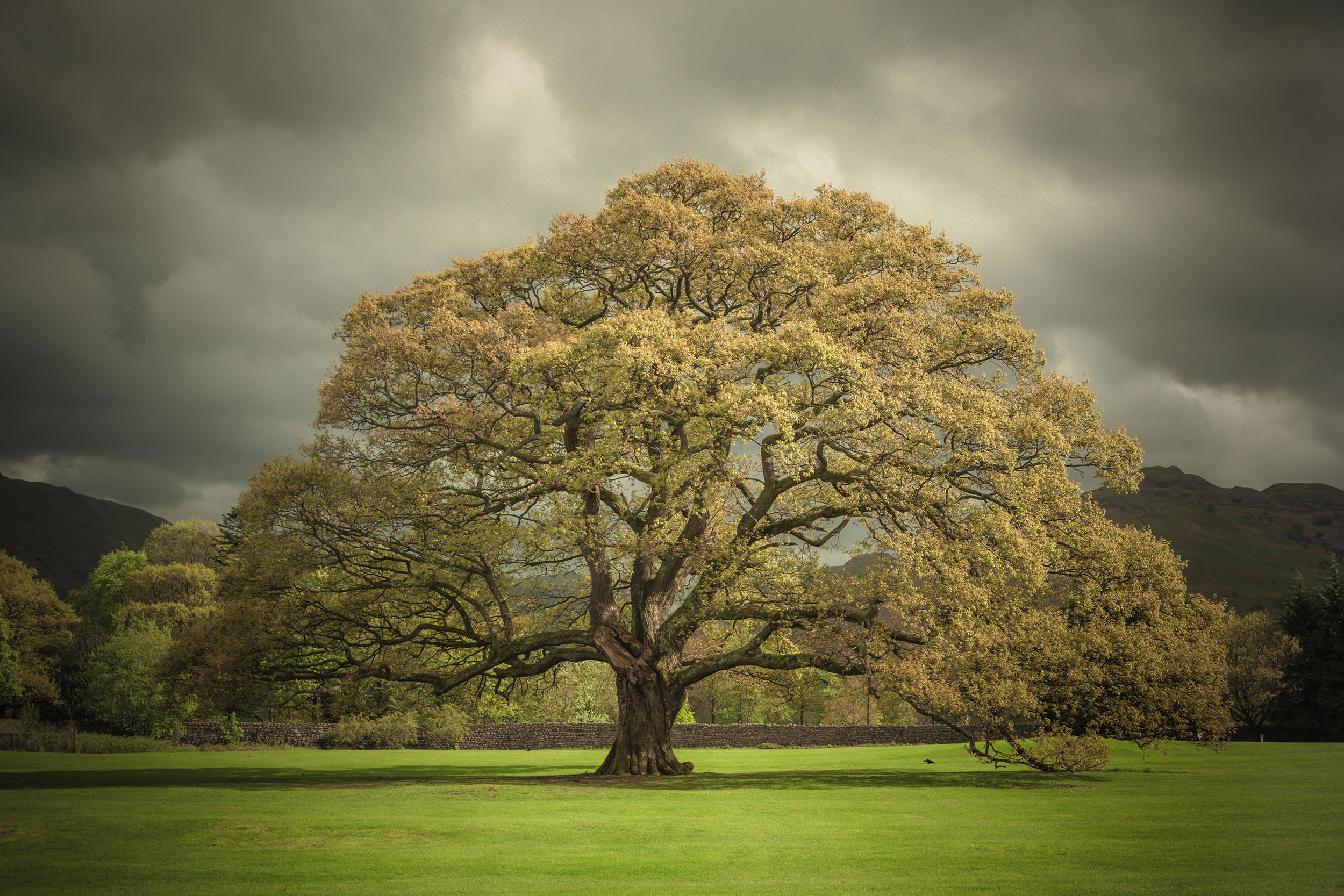
It’s an immense challenge. The genus Quercus comprises about 600 species, some deciduous, others evergreen, and ranging in habit from soaring trees to scrubby shrubs. They grow wild across the Northern Hemisphere, from cool-temperate to tropical climes, and in habitats as diverse as swamp and semi-desert. Common to all is the acorn — happily, a most practical little package for travellers to carry or send back to Britain.
In the 1590s, John Gerard reported that the holm oak (Q. ilex), an evergreen lately introduced from the Continent, ‘groweth in hir Maiesties garden of White Hal… and in some other places heere and there’. It was the first exotic oak that England acquired.
Over the next two centuries, other species arrived, natives of North America, North Africa, Southern and Eastern Europe, the Caucasus, Near East and Far East. All were welcomed, joining our two indigenous species as the objects of an intensified version of the oak veneration that had long been part of British life and culture.
New oaks were bred from these introductions. One such was Q. Lucombeana, a stately semi-evergreen selection of the cross between the cork and Turkey oaks that was a hit when it was launched in the 1760s. So delighted was its raiser, the Exeter nurseryman William Lucombe, that he resolved to be buried in it when the time came.
In his eighties, sensing the end was nigh, he had the original tree felled and its timber stored under his bed for coffin-wood — only, he lived for another 20 years and, when he died, the planks were found to have rotted. Another fine specimen of Q. Lucombeana was felled for his casket and reckoned to be a sadder loss than the death of a 102 year old.
In the 19th century, more species were discovered and introduced to British cultivation. We began to form a sense of the sheer grandeur and range of Quercus: the genus was one of the Plant Kingdom’s symphonies or epics. It was to be expected that botanic gardens would collect every available kind and grow them together, but private individuals took to doing the same. For tree-loving land-owners, one of the noblest and most ambitious projects became the planting of what henceforth was called a quercetum.
The term came from Classical Latin. It occurs in one of Horace’s Odes. In his day, the age of Augustus, it simply meant a grove, wood or plantation of oaks. It meant the same when it first entered the English language: ‘the Quercetum, Oaktoft or Holt of Sichem,’ wrote the Biblical scholar Joseph Mede in the 1620s or 1630s.
Only in Britain’s 19th-century botanical boom did quercetum come to mean ‘a living collection of Quercus species and varieties, grown for science’s and/or ornament’s sake’.
And yet the oak-leaf crown does not go to these Victorian planters. Rather, Britain’s greatest querceta have all been made during the reign of our present Queen. Given the kindness of our climate — which, uniquely, permits the cultivation, outdoors and all on one site, of oaks from equable woods, boreal forests, Mediterranean drylands, Asian ravines and Mexican mountains — it would be fair to describe them as the greatest in the world.
The largest is at Chevithorne Barton in Devon, a pastoral pageant of hundreds of trees that was begun in the 1970s and became the National Collection of Oaks in 1992.
Its founder, the late Michael Heathcoat Amory, knew of 40 private querceta that were in progress in the UK in the first decade of this century, ranging in scale from Lord Heseltine’s spectacular arboretum at Thenford to the city garden, teeming with sylvan treasures of James MacEwen, now curator of the Chevithorne Barton collection.
Today, the number of collectors is much higher and rising fast, judging by the demand experienced by nurseries that specialise in oaks such as Bluebell Arboretum (www.bluebellnursery.com) and Mallet Court (www.malletcourt.co.uk).
Year after year, they offer yet more superb oaks that are new to our gardens, from novel cultivars of well-known species such as the Q. rubra Magic Fire planted at Glanusk by The Prince of Wales, to unfamiliar species, such as the hardy evergreens introduced from Mexico by Allen Coombes, that most eminent and prolific of Quercus botanists. Oaks, it seems, are inexhaustible; as is Britain’s love of them.
That love is nowhere more palpable than at the Glanusk Quercetum. Its oaks flank an avenue that begins at Penmyarth, the Legge-Bourke family home and gardens, and winds through the estate in a walk of sublime picturesqueness.
The exotics seem perfectly at home, enlarging on the cohabitation of our native species — Q. petraea, chiefly from the Celtic fringe, abutting and intermingling with Q. robur, a denizen mainly of the Anglo-Saxon lowlands — that was itself such a powerful metaphor of early British identity.
‘We now have 229 oaks planted out,’ says Mr Legge-Bourke, ‘and another 66 varieties growing from acorns in the glasshouse, but there’s still a long way to go — 600 species is my target, plus all the cultivars. I think we’ll get there, now that we’re welcoming visitors, not to mention the excellent oak gin that we’re launching.’
I think they will, too. Much as it looks like Arcadia, at Glanusk, Jove’s tree has found a new Olympus.
To celebrate the opening of the Quercetum, Harry and the team have created an Oak Mellowed Gin, by pouring the made gin through wood chips of ‘Q. robur’ and other Quercus species to bring out the flavour and, of course, an Oak cask Whisky as well… all made locally. For open days, visit www.glanuskestate.com or call 01873 810414.
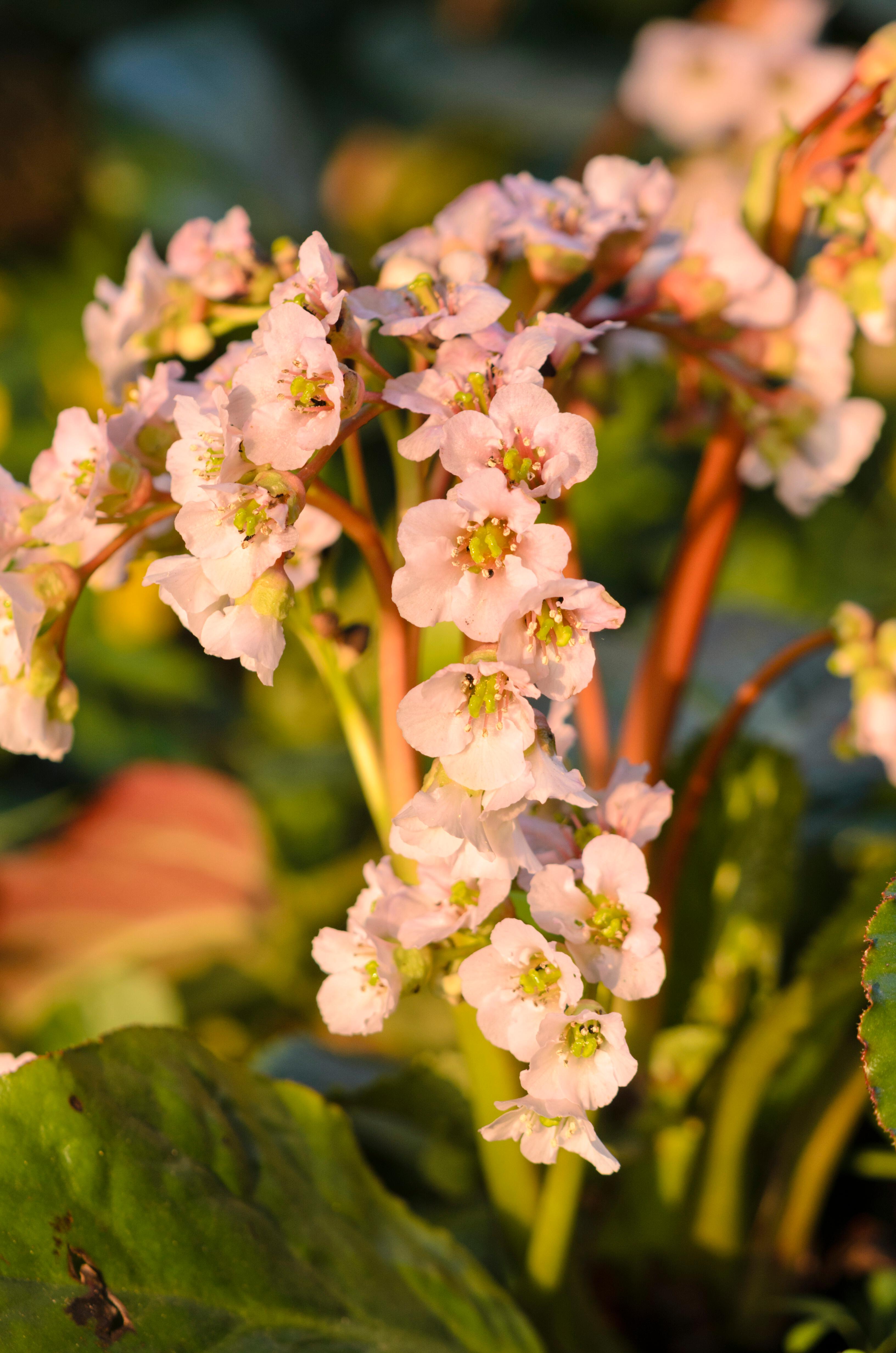
Mark Griffiths: Why gardening is vastly richer, wider and deeper than in Gertrude Jekyll’s day
Gertrude Jekyll loved bergenais, but she'd be the first to agree that the variety around today far outshines what was

In Focus: Mark Griffiths on the history and revival of Sargent’s 'Carnation, Lily, Lily, Rose'
Mark Griffiths describes how a dinner-party question led to the uncovering of the true identities of the lilies in Sargent’s
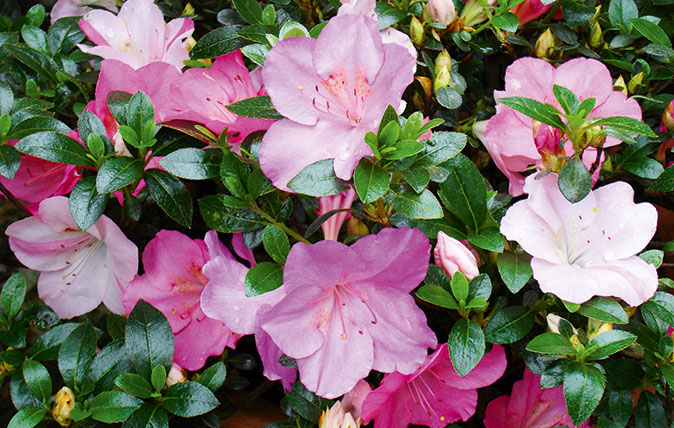
Credit: Mark Grifiths
The Japanese azaleas set to flourish across Britain's gardens
Mark Griffiths looks at Satsuki azaleas – one of Japan's most revered plants, and yet perfect for an English garden.
-
 ‘It had the air of an ex-rental, and that’s putting it politely’: How an antique dealer transformed a run-down Georgian house in Chatham Dockyards
‘It had the air of an ex-rental, and that’s putting it politely’: How an antique dealer transformed a run-down Georgian house in Chatham DockyardsAn antique dealer with an eye for colour has rescued an 18th-century house from years of neglect with the help of the team at Mylands.
By Arabella Youens
-
 A home cinema, tasteful interiors and 65 acres of private parkland hidden in an unassuming lodge in Kent
A home cinema, tasteful interiors and 65 acres of private parkland hidden in an unassuming lodge in KentNorth Lodge near Tonbridge may seem relatively simple, but there is a lot more than what meets the eye.
By James Fisher